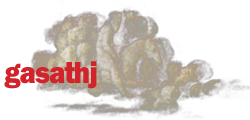This project was motivated as an exploration of the capabilities provided by new digital media for creativity, art creation and art therapy. In the ancient Greek world, téchnē, the word for art, used to refer to both art and technology. The expression, imagination, creation, aesthetics, beauty, thought and emotions which are integral to “téchnē” “were not confined to “fine arts”. However, this connection between technology and art has been weakened through gradual separation of fine art from artisanship through time. This connection, we believe, is particularly relevant today that digital technology becomes pervasive.
We return to this ancient tradition of téchnē with Timaeus, a futuristic art studio that enables creation of personalized, customisable and generative digital sculptures. Our goal with Timaeus is to provide a new tool for artistic expression. Beyond a general contribution to art, one particular application we envision is enabling the creation of “memory sculptures” for reminiscence in the context of art therapy of dementia patients.
Timaeus is the name of a Platonic dialogue but it also stands as acronym for Three-dimensional Illuminated Media-Augmented Ethereal-Unreal Sculptures. It is a digital art studio that enables the creation of personalised virtual sculptures built with expanding and interconnected geometrical volumes. Timaeus sculptures are created by pulling smaller curved and cubic volumes out of an initial sphere. They can be customised with media, e.g., pictures, videos and music that are overlaid or seeded in the sculpture. Media can represent memories or more generally facts, including live internet feeds that can be used to create artistic narratives in space. Such facts are embedded in the sculpture and can be experienced in different ways with the capability of zooming in and out, rotating, viewing from different angles, and applying sounds and soundtracks. Sculptures are hollow and translucent. They can be illuminated, and the space that they enclose can be viewed internally. Viewed from inside, these sculptures then become curved spaces or worlds where projected media can be experienced in three or four dimensions, if we include time. Timaeus also incorporates generative components. Features of images, videos or music can be algorithmically extracted and used to modify the shape or movement of a perpetually mutating or dancing sculpture where these media have been applied.
Timaeus was inspired by the homonymous Platonic dialogue. The dialogue develops a geometric cosmogony in which the world is composed of units represented as Platonic geometrical solids. Apart from its literary value and a fine example of dialectic argumentation, the dialogue provides extraordinary insight into later scientific discoveries in the field of chemistry and biology which have discovered harmonious, often geometrically perfect, structures in the fabric of matter. Note that Timaeus, the art studio, creates virtual worlds out of basic geometrical entities that one can manipulate. The Timaeus dialogue also contains the original reference to the myth of Atlantis, the lost mythical city, and thus makes a relevant connection to loss of memory and therefore the topics of reminiscence and dementia that we wish to address in our application.
We are currently designing a study in art therapy of dementia patients. One hypothesis is that artistic memory sculptures can both aid reminiscence and create a much needed sense of well-being. Reviewing one's life in an artistic manner may help to place fragments in perspective as well as work out gaps and conflicts. This could nurture feelings of relaxation through artistic creation and of stronger more coherent self. We are also planning a more general evaluation of Timaeus as an art studio within the artistic community focusing on its ability to improve creativity and stimulate new forms of expression, so please contact us if you are interested,
Examples of work
Figure 1 shows a virtual relief created in a style which is reminiscent of a sumptuous Byzantine silk fabric and which was designed to connect the project to the Byzantine art of Ravenna, where Timaeus was first exhibited at the Generative Art Conference of 2017.
Figure 1. A relief created in Timaeus in the style of Byzantine silk fabric
Figure 2 displays an example of a memory sculpture created in Timaeus. A colourful painting by abstract artist Roberto Bono (http://www.arteutile.net/) is covering the surface of the sculpture. Hanging images form an illuminated 3D collage that can be navigated both internally and externally.
Figure 2. Memory sculpture created in Timaeus
Several videos of dynamic virtual sculptures created in Timaeus are linked below. Video 1 shows a groovy musical sculpture. Video 2 is a personal memory sculpture, Video 3 is a political sculpture containing footage of migrants crossing the Mediterranean that is blended with a painting by Roberto Bono which was inspired by the plight of migrants. Finally, Video 4 shows mount Olympus painted with the colours of Roberto Bono. Note that the sample sculptures in these videos were populated using publically available youtube media of several artists and sources. We would like to thank the authors of these media, and state that their use was respectful, and was done for demonstration and research purposes only.
https://1drv.ms/v/s!AojlXdLQOsttxlDrueTNQ-p1msMz
Video 1. A jazzy feeling
https://1drv.ms/v/s!AojlXdLQOsttwQ20JZIIRGDq3lM9
Video 2. A memory sculpture
https://1drv.ms/v/s!AojlXdLQOsttxlIfmSu6SS8bWakQ
Video 3. Sea Guernica
https://1drv.ms/v/s!AojlXdLQOsttxk_V1PBG2GM69VxE
Video 4. Colourful Mountain Olympus
